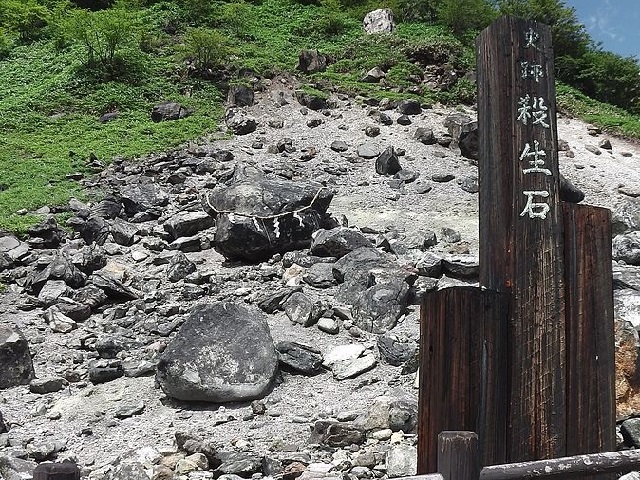
Stone said to imprison evil fox spirit spilt in half earlier this year.
The town of Nasu, Tochigi Prefecture, has some wonderful sights for travelers to see. Majestic mountains. Lush forests. The Killing Stone.
OK, so that last one might not immediately scream “Fun vacation!” so much as “Stay away!” The folklore surrounding the rock, though, which claims it holds the imprisoned spirit of an evil nine-tailed kitsune (fox spirit), makes it an intriguing local landmark, especially for fans of folktales and anime series in which fox spirits feature.
This month, though, the Killing Stone’s name has proven to be truth in advertising, as on the morning of December 7 the bodies of eight wild boars were discovered in Nasu, with the animals dropping dead near the stone.
▼ The Killing Stone. The bodies of the boars (three adults and five piglets) can be seen at the 45-second mark).
The incident comes almost exactly nine months after the Killing Stone suddenly split in two, prompting the performance of a purification ceremony by a local Shinto priest at the site. With the Killing Stone back in the news once again, Japanese Twitter users have reacted with comments such as:
“Well, it is the Killing Stone, after all.”
“I thought it was just superstition and stories, but it can seriously kill…”
“Something has awakened.”
“Is…is this the curse of the kistsune?”
“When the stone split back in March, some people wondered if it was the seal breaking.”
There is, however, a non-supernatural explanation. The Killing Stone is located in Nasu’s Yumoto district. Yumoto translates as “source of hot water,” a reference to the geothermic activity that heats Nasu’s hot springs. However, there’s also a lot of hydrogen sulfide and sulfurous acid gas that seeps out of the ground in the area around the Killing Stone.
A human adult with a healthy constitution isn’t likely to be affected by the amount of exposure they’ll experience stopping by the Killing Stone to snap some pictures, but the gases are poisonous. Satohiko Zensoji, a member of the Ministry of the Environment’s Nikko National Park Nasu Office, believes wild animals are also exposed to a greater concentration of the gasses (compared to humans) because of their proximity to the ground. However, while there have been previous reports of carcasses of tanuki and foxes (as in actual fox animals, not kitsune spirits) found near the killing stone, this is the first time Zensoji can recall boars being felled by the Killing Stone’s environment.
Tests to see if the boars had been infected with swine fever came back negative, lending further plausibility to explanation of poisonous gas being the cause of death. The animals’ carcasses have been removed and incinerated, and with the rough couple of weeks boars have been having in Japan, hopefully it’s the last sad story we’ll have about them for a while.
Source: Shimotsuke Shimbun via Yahoo! Japan News, Twitter
Top image: Wikipedia/ウィキ太郎
● Want to hear about SoraNews24’s latest articles as soon as they’re published? Follow us on Facebook and Twitter!